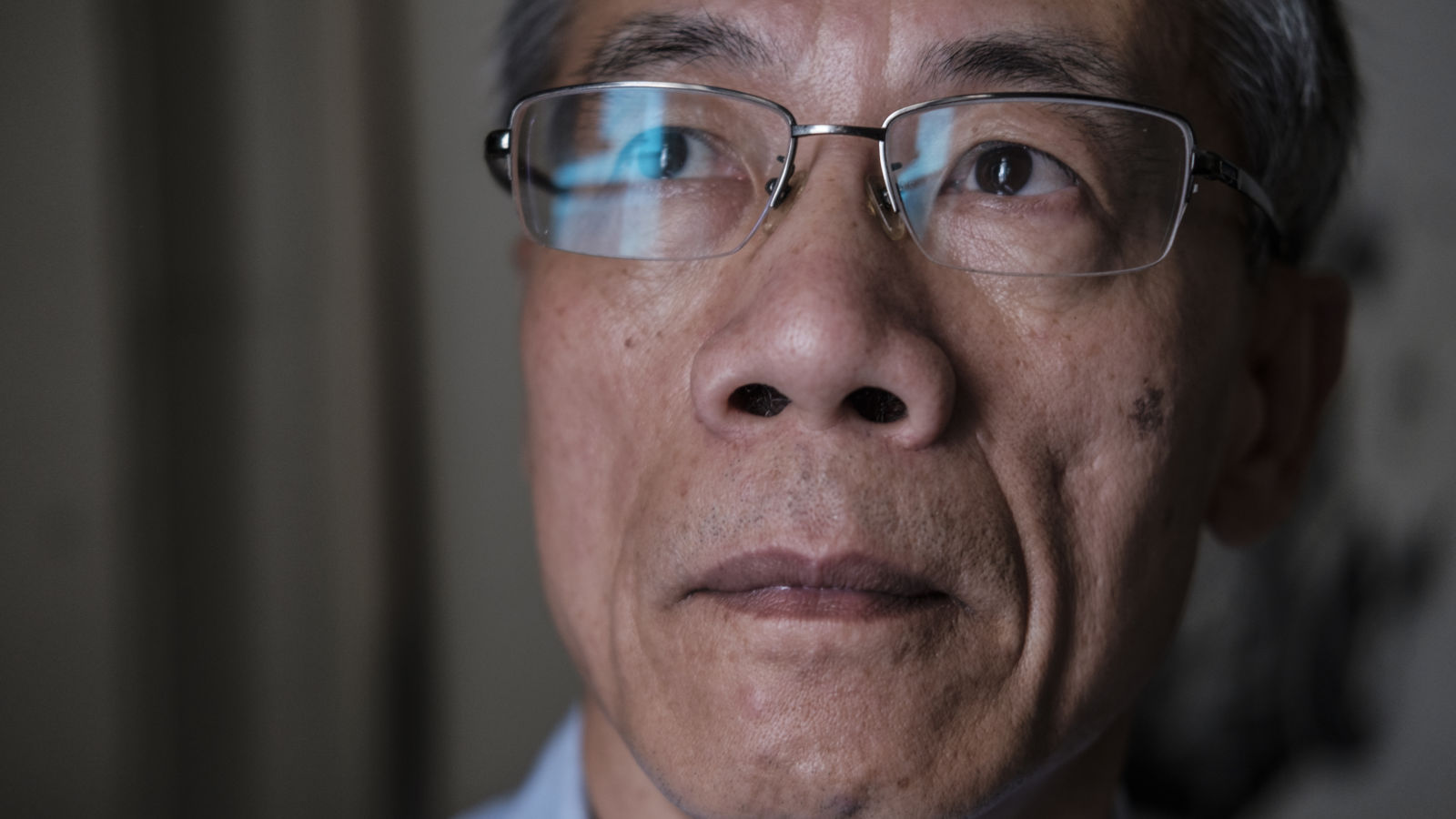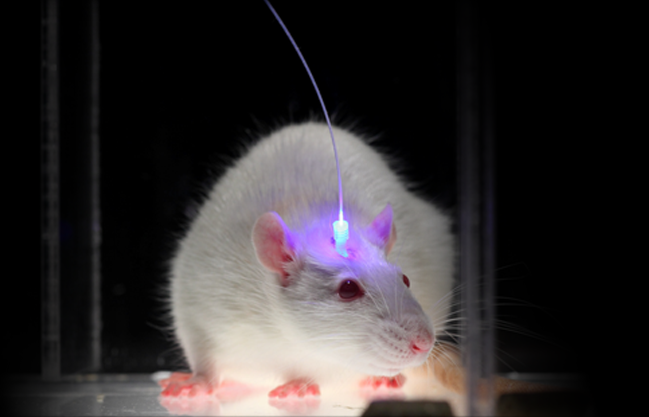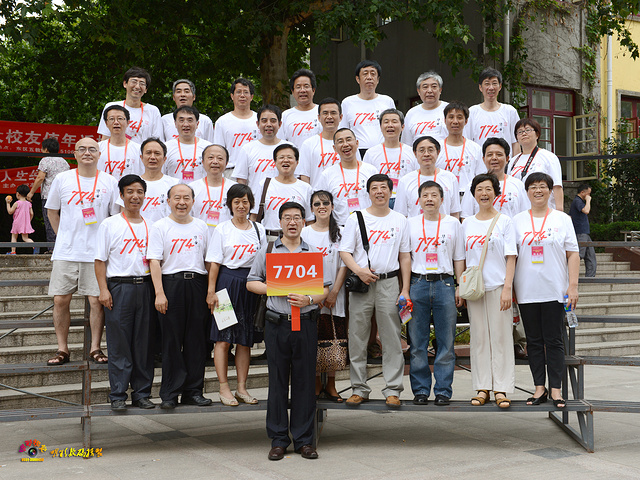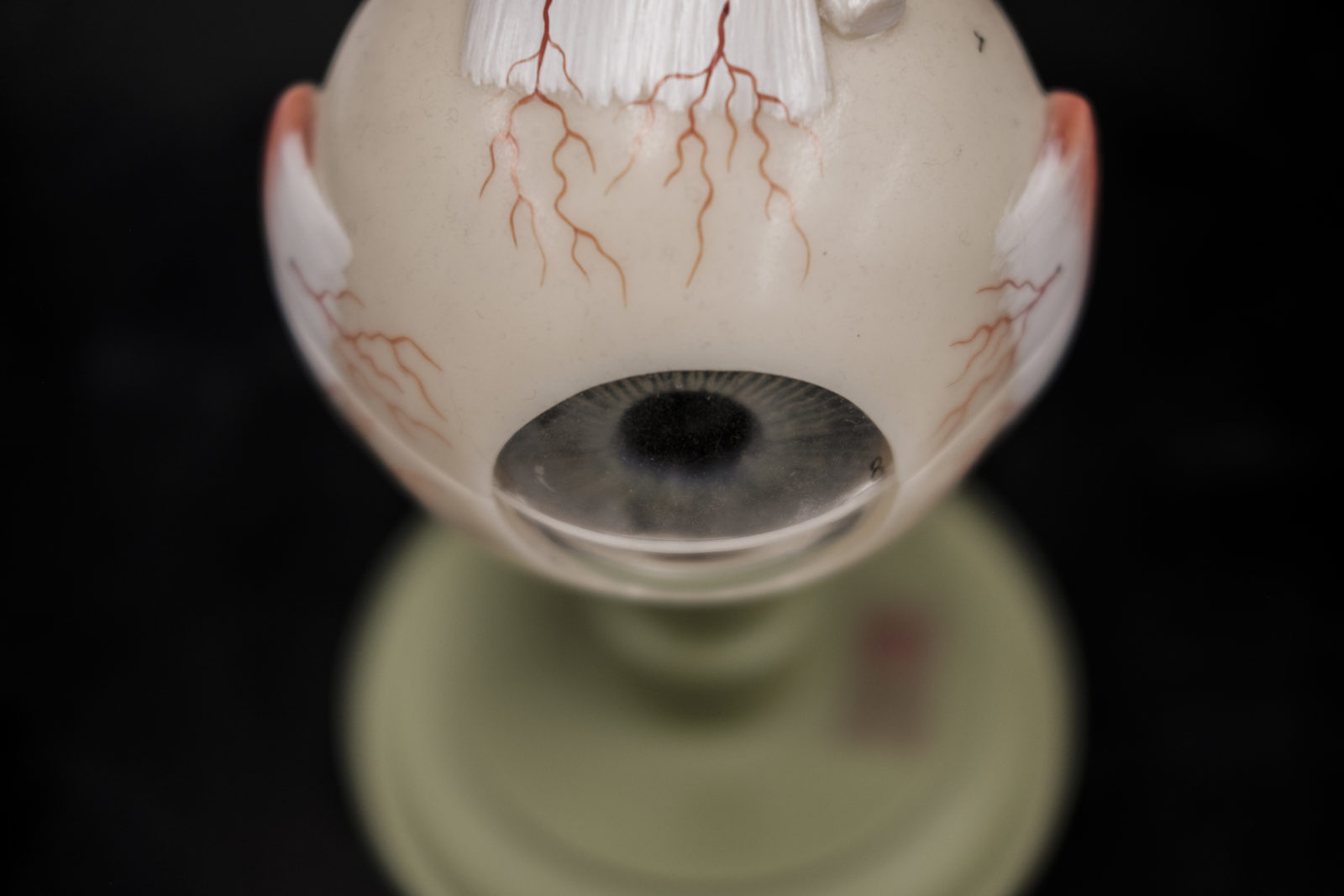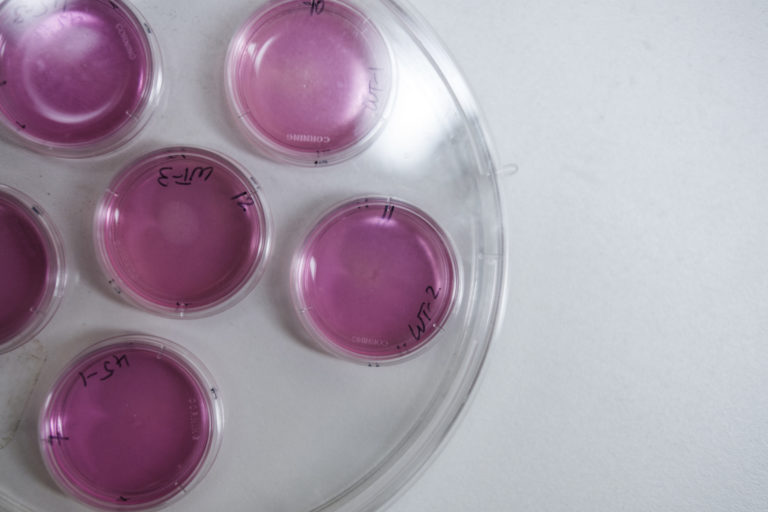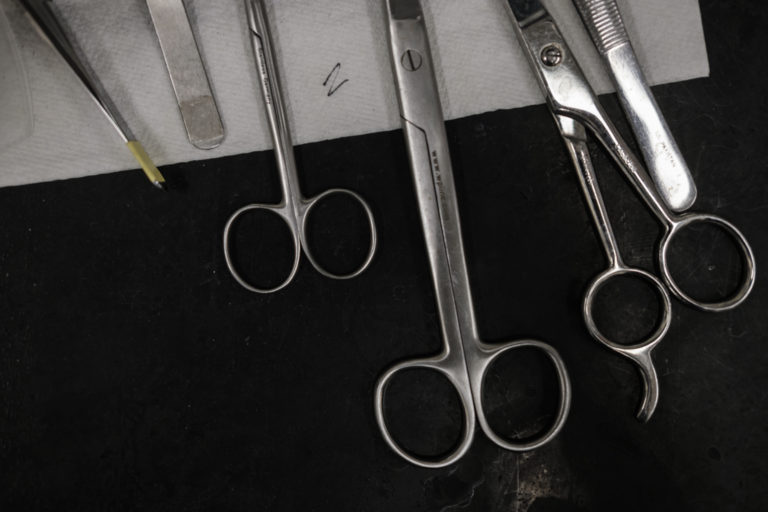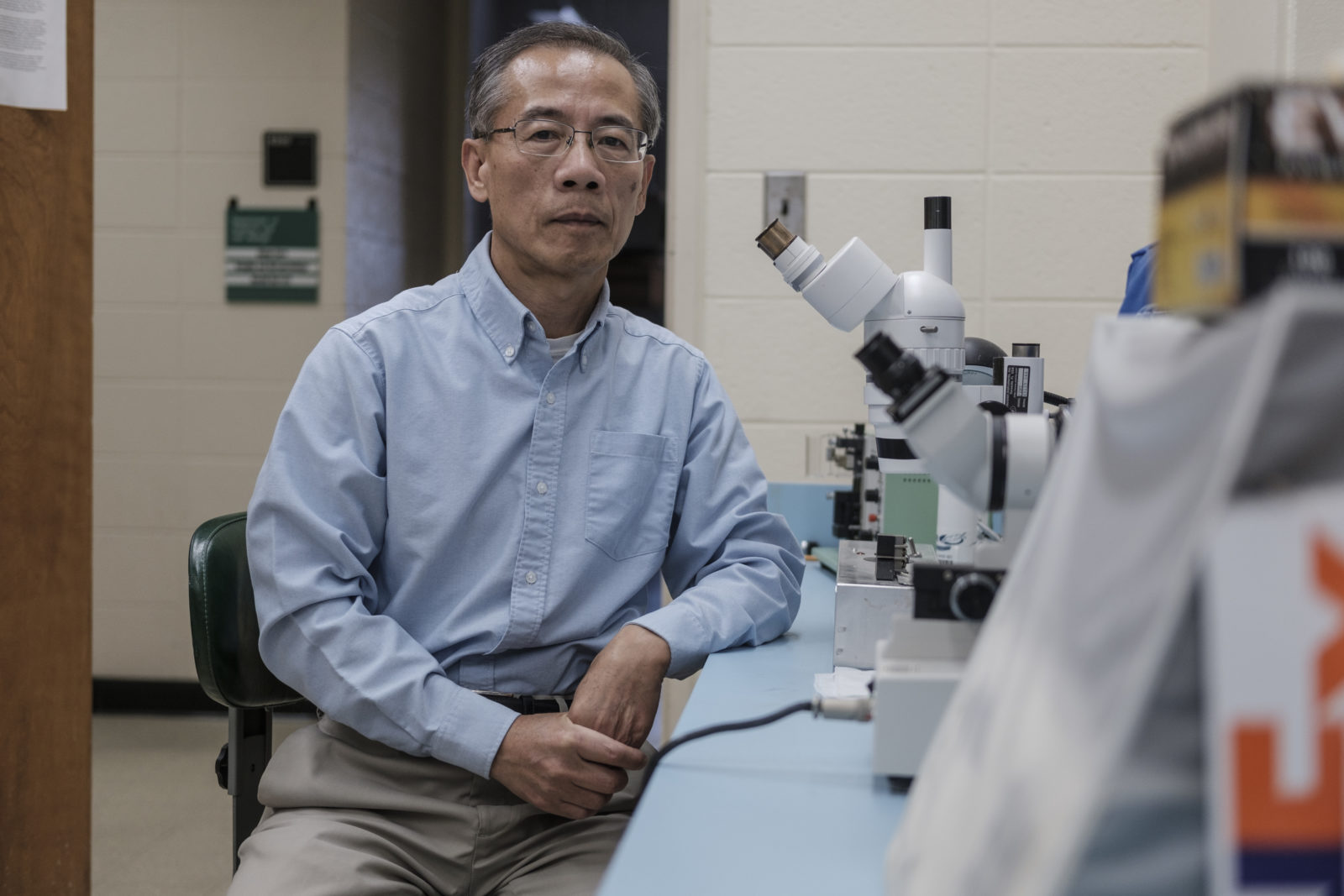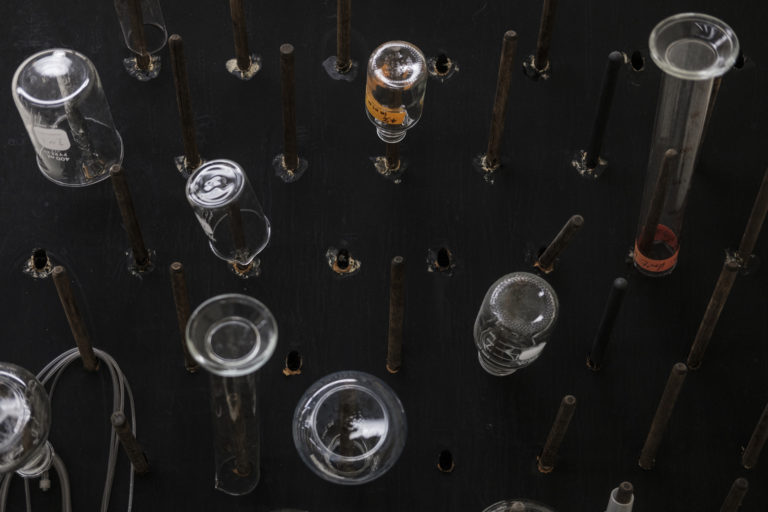博文
一定拿诺奖的光遗传学和被遗忘的潘卓华
 精选
精选
|
新闻原文请见:
光遗传学是一项注定取得诺贝尔奖的技术。而华人科学家潘卓华(中国科大774校友)可能是光遗传学的创始人却被遗忘了。
光遗传学被认为是数十年来神经科学的最大突破,为治愈帕金森、盲人和慢性病提供了可能。《知识分子》也曾于2016年5月7日撰文《光遗传学:一项注定要得诺贝尔奖的技术》。然而,它的创始人又是谁呢?近日,美国健康医疗专业媒体《STAT》采访了这位可能是光遗传学第一人的科学家——美国韦恩州立大学教授潘卓华(中国科学技术大学774校友)。
很多神经生物学家没听说过潘卓华,中国人不知道潘卓华,可惜的是中国科大人也不知道潘卓华——中国科大新创校友基金会在2016年4月3日曾以《转基因人?绿藻基因转人体治失明!》为题,介绍过潘卓华及其技术应用,同样波澜不惊,未能引起校友的关注。
早在2004年2月,潘卓华成功将光敏通道蛋白(Channelrhodopsin)添加到视网膜神经元中,通过光照改变细胞活性。为此,美国国立卫生研究院(NIH)授予他30万美元的资助,并称赞:这是一项是史无前例的革命性技术。
潘卓华并不知道,他当时正与世界各地多家实验室赛跑。谁料本是最早完成实验的潘卓华,先后在《Nature》《Nature Neuroscience》《Journal of Neuroscience》等期刊的文章投递屡屡遭拒,并未引起重视。杂志编辑回应称其文章应用狭窄,只解释了光敏通道蛋白在恢复视觉上的应用,而非普遍应用。也有人说,潘卓华的国别、学校排名等都是被忽视的原因。有人说:他如果来自名校,故事可能不同。
用于光与大脑研究的小鼠。
2005年,当相似的成果由美国斯坦福大学的Karl Deisseroth和麻省理工学院的 Ed Boyden发表在《Nature Neuroscience》之后,轰动一时,并被《纽约时报》称为光遗传学史上的重大突破。相较于美国学者获得的高额资金与媒体聚焦,潘卓华则在十年间资助有限仅够维持研究。当《STAT》问对于当年经历的看法时,他称赞了美国学者,说只是如果自己的文章发表更早,他们就能获得更多的认可了。现在,潘卓华还在从事光遗传学的研究,说:“我的实验室很小,我们的主要兴趣在于让人们重获光明。”
大写的“悲剧”和不公平?
科学网博主、新加坡国立大学副教授张洛欣为潘卓华这位小人物鸣不平“没背景的小人物都有一个黎明前的一段黑暗”。海外华人学者集中的未名空间网友maxdna将潘卓华的成果总结为:
早在ChR2 2003年9月报道发表后。2004年2月潘卓华就发现ChR2 能激活RGC(retinal ganglion cell )。潘卓华申请了美国NIH(国立医学研究院)30万美元基金。2004年8月他用病毒实现了在大鼠眼睛里的在体表达,并且能被光激活。
伟大的科学发现之后是一系列悲剧的开始:
2004 年11月25日他向著名的《自然》(Nature)被拒。编辑建议他转投更细分专业领域的《Nature Neuroscience》杂志。
接着转投Nature Neuroscience也被拒!
2005年初,他的成果再投Journal of Neuroscience,再次被拒。
2005年5月他在IVOS( Association for Research in Vision and Opthamology)会议上介绍了自己的成果。 他的讲座只持续了15分钟。
2005年8月 Nature Neuroscience 发表了Edward Boyden 和 Karl Deisseroth 以及张峰的optogenetics文章。
2006年4月他的文章才终于被Neuron接受。
美国韦恩州立大学医学院博士后研究员陆绮曾撰文指出:“但是最晚于2006年4月发表的潘卓华老师实验室的工作做得最全面,从体外细胞表达到小鼠在体神经细胞表达和电生理记录一应俱全。”
潘卓华教授(照片来自俄罗斯学术网站)。
并未纸上谈兵,潘式光遗传学已走向产业化
潘卓华教授并未止步于纸上谈兵。
《麻省理工科技评论》发布2016年“50大创新公司”(被称“全球最聪明”的公司)有一家RetroSense Therapeutics公司。
RetroSense Therapeutics是一家成立于2009年的黑科技公司,它将基因治疗和光遗传学结合起来治疗失明,或许会给失明的患者带来新的希望。2016年2 月底,在RetroSense Therapeutics科学家潘卓华教授的主导下,一名因视网膜色素变性(retinitis pigmentosa,RP)丧失视力的Texas女性,已经接受光遗传学治疗,成为光遗传学治疗的全球第一人。
RetroSense Therapeutics在本次治疗中使用的药物是RST-001,属于基因治疗药物。即使用对人体无害的病毒,将绿藻的感光蛋白转到眼睛特定的细胞中, 使该细胞具备将光信号转换成电信号的功能,顶替受损感光细胞的工作。由于目前没有治疗RP的药物,因此RetroSense Therapeutics的RST-001被FDA授予"孤儿药"称号。目前尚不了解公司估值,但其已融资1200万美元。据了解,RetroSense Therapeutics于2015年成功拿到了美国食品与药品监督管理局(FDA)的临床试验批准,可在视网膜色素变性的患者身上,测试基于光遗传学的治疗方法。
都被遗忘:在中国与科大
2005年,当相似的成果由美国斯坦福大学的Karl Deisseroth和麻省理工学院的 Ed Boyden发表在《Nature Neuroscience》之后,轰动一时,并被《纽约时报》称为光遗传学史上的重大突破。
2005年至今,Deisseroth获得1800万美元的基金;Boyden拿到的超过1000万美元。他们都成为科学明星 多次获奖,暴露在聚光灯下,名利双收。潘卓华只在过去十年拿到了300万美元——STAT News说这只够 勉强维持运营。
对于这一切,潘卓华心静如水。当《STAT》问对于当年经历的看法时,他坚持称赞了美国学者“毫无疑问,他们做了杰出的工作”。他也平静的说:我也很幸运。虽然如果自己的文章发表更早,故事可能不同。现在,潘卓华还在从事光遗传学的研究,说:“我的实验室很小,我们的主要兴趣在于让人们重获光明。”
潘卓华在哪儿都不为人注意,更有趣的是,或许一大半中国科大774同班同学都不记得他。中国科大新创校友基金会联络了三位科大774同班同学。 另一位男生对这位四五年的同学抱歉的说“没有记忆”。另一位博闻强记的女生说“记不清了。我印象中潘是一个话很少、少年时就很老成的人,理论物理专业。你请万东查查,774家谱他最门儿清。”
她笑称“我没有评价了,整个大学期间我没与他说过一句话。我想774的女生他能说出名字的不会超过5个。”
原物理学院院长刘万东教授(774)是唯一记得潘卓华的人“潘卓华是金华人,父亲在金华一中工作,他妹妹都毕业于该校。”当新创基金会请刘万东教授给出他脑海里所有的潘卓华的记忆时。这位文彩极好的教授只能说出六个字“老实,不善交往。” 新创基金会的新闻稿在9月2日发给774全体校友之后,一位较真校友来信说老潘“变化不算大,我想应该有1/2 - 1/3的774er还记得他。”
得知老友潘卓华成果的意义,底特律校友、朱斌(776)称赞他“朴实低调、为人随和友善”,其实也时常参加底特律校友会。
这很正常:中国科大774科学家璀璨若繁星,有两位中科院院士赵政国、谢心澄;五位美国物理学会会士周冰、陈剑平、何小刚、赵政国、谢心澄。潘卓华低调的隐身在他小小的实验室,醉心于光遗传学研究。——他是纯粹的科学人。
光遗传学先驱潘卓华教授简介
潘卓华,1978年3月从浙江金华一中进入中国科学技术大学近代物理系学习(774),1982年获得学士学位。1984年获中国科学院生物物理所硕士;1990年获纽约州立大学布法罗分校博士学位。随后担任美国韦恩州立大学医学院解刨学和细胞生物学系 教授,2011年出任该校Kresge眼科研究所眼科学Edward T. and Ellen K. Dryer讲席教授。潘教授也是RetroSense Therapeutics首席科学家。
2001年获得韦恩州立大学医学院杰出教授研究奖;2004年获得该校Career Development Chair奖。潘卓华教授的英文主页请见这里。
谁是起底光遗传学之父的STAT News?
STAT News由Boston Globe Media创办,与波士顿环球报隶属于同一集团。
STAT News是一家立足快速、深度与艰深的科技媒体,侧重于科学与实验室成果,医院与生物科技报道。STAT News网站称:我们解剖关键发现,直面争议话题,戳穿炒作。其主页点击这里。
新闻来源:英文新闻来自STAT,中文新闻由中国科大新创校友基金会独家发布。欢迎转载,必须标明出处。作者为徐瑞君(新创基金会实习生,毕业于青年政治学院新闻系),编辑李惠玉(9507)、刘志峰(9500)。
STAT News9月1日的报道见下文。
He may have invented one of neuroscience’s biggest advances. But you’ve never heard of him
Zhuo-Hua Pan in his lab at Wayne State University in Detroit.
The next revolution in medicine just might come from a new lab technique that makes neurons sensitive to light. The technique, called optogenetics, is one of the biggest breakthroughs in neuroscience in decades. It has the potential to cure blindness, treat Parkinson’s disease, and relieve chronic pain. Moreover, it’s become widely used to probe the workings of animals’ brains in the lab, leading to breakthroughs in scientists’ understanding of things like sleep, addiction, and sensation.
So it’s not surprising that the two Americans hailed as inventors of optogenetics are rock stars in the science world. Karl Deisseroth at Stanford University and Ed Boyden at the Massachusetts Institute of Technology have collected tens of millions in grants and won millions in prize money in recent years. They’ve stocked their labs with the best equipment and the brightest minds. They’ve been lauded in the media and celebrated at conferences around the world. They’re considered all but certain to win a Nobel Prize.
There’s only one problem with this story:
It just may be that Zhuo-Hua Pan invented optogenetics first.
Even many neuroscientists have never heard of Pan.
Pan, 60, is a vision scientist at Wayne State University in Detroit who began his research career in his home country of China. He moved to the United States in the 1980s to pursue his PhD and never left. He wears wire-rimmed glasses over a broad nose framed by smile-lines in his cheeks. His colleagues describe him as a pure scientist: modest, dedicated, careful.
Pan was driven by a desire to cure blindness. In the early 2000s, he imagined that putting a light-sensitive protein into the eye could restore vision in the blind — compensating for the death of rods and cones by making other cells light-sensitive.
That was the germ of the idea of optogenetics — taking a protein that converts light into electrical activity and putting it into neurons. That way, scientists could shine light and stimulate the neurons remotely, allowing them to manipulate brain circuits. Others had experimented with trying to make neurons light-sensitive before, but those strategies hadn’t caught on because they lacked the right light-sensitive protein.
That all changed with the first molecular description of channelrhodopsin, published in 2003.
Channelrhodopsin, a protein made by green algae, responds to light by pumping ions into cells, which helps the algae search out sunlight.
That “was one of the most exciting things in my life,” Pan said. “I thought, wow! This is the molecule we are looking for. This is the light sensor we are looking for.”
By February 2004, he was trying channelrhodopsin out in ganglion cells — the neurons in our eyes that connect directly to the brain — that he had cultured in a dish. They became electrically active in response to light. Over the moon with excitement, Pan applied for a grant from the National Institutes of Health. The NIH awarded him $300,000, with the comment that his research was “quite an unprecedented, highly innovative proposal, bordering on the unknown.”
A side view of a blind mouse’s retina containing channelrhodopsin. The round structures at the bottom are the cell bodies of the neurons.
A close-up of the mouse retina showing neurons with channelrhodopsin and green fluorescent protein.
Pan didn’t know it at the time but he was racing against research groups across the United States and around the world to put channelrhodopsin into neurons.
Deisseroth and Boyden were working at Stanford, where Deisseroth was finishing a postdoc and Boyden was finishing graduate school. At least two other groups were in the game as well, led by Stefan Herlitze and Lynn Landmesser, who were at Case Western Reserve University at the time, and Hiromu Yawo at Tohoku University in Japan.
And they were by no means the only scientists experimenting with ways to control neurons with light. By 2004, Gero Miesenbock and Richard Kramer had already published articles using other, more complicated molecules for that purpose. But channelrhodopsin was the tool that was about to revolutionize the field.
The Stanford group had been toying with the idea of controlling neurons with light for quite some time. They had also noticed the paper about the discovery of channelrhodopsin. Deisseroth got in touch with the paper’s author, Georg Nagel, in March 2004 and asked if Nagel would collaborate, sharing the channelrhodopsin DNA so Boyden could try it out in neurons. In August 2004, Boyden shined light on a brain neuron in a dish and recorded electrical activity from the channelrhodopsin.
Pan had done the same thing with retina neurons six months earlier. But then he got scooped.
‘We didn’t feel very lucky’
Boyden, who is now a professor at MIT, was surprised when told by STAT that Pan ran the experiment first.
“Wow. Interesting. I didn’t know that,” Boyden said.
“It’s funny to think about how science regards when something is proven,” he added, noting that scientists build on each others’ work, sometimes working together while at other times working in parallel, scrambling onto one another’s shoulders. “There’s both intentional and unintentional teamwork,” he said.
The Stanford press office said Deisseroth was unavailable. In response to questions provided by STAT, spokesman Bruce Goldman wrote that Pan’s study was “a far cry from the use of optogenetics … to open up a new world of precision neuroscience. That’s the potential revealed in Dr. Deisseroth’s widely cited 2005 publication.”
Pan said he might have mentioned the timing of his experiment to Boyden once several years ago, but, Pan said, “I didn’t want to take too much time to talk about this because people feel uncomfortable.”
That sentiment is in keeping with Pan’s wider approach — diligent, reserved, outside the limelight. Wayne State is a small university not known for its scientific research. Pan had gone to a state school for his PhD, then done mostly obscure research for decades. These things may have contributed to what happened next, when he tried to get his invention out into the world: It wasn’t seen as the big advance it was.
A model of a human eye in Pan’s lab.
Pan spent the summer of 2004 figuring out how to get the channelrhodopsin protein into a living eye. He settled on the idea of using a virus, which could infect cells in the eye and sneak the channelrhodopsin DNA inside. His colleague, Alexander Dizhoor, a professor at Salus University, engineered the channelrhodopsin DNA to add the gene for a protein that fluoresced green under blue light, so they could track where the channelrhodopsin ended up.
In July 2004, Pan dosed his first rat with the virus. About five weeks later, he looked at the retinas to see if it had worked. What he saw was a sea of green — thousands of ganglion cells had the green protein coupled to channelrhodopsin in their membranes. And when he stuck an electrode in one of those cells and turned on a lamp, the cell responded with a flurry of electrical activity. The channelrhodopsin was working. It was just a first step, but it was a revolutionary step — indicating that Pan’s method may just be able to restore sight to the blind.
“Everything turned out beautifully,” Pan said.
So Pan and Dizhoor wrote a paper about their work and submitted it to Nature on November 25, 2004, according to the submission letter Pan shared with STAT. The editors at Nature suggested they send it on to a more specialized journal called Nature Neuroscience, which rejected it. Early the next year, Pan sent the paper to the Journal of Neuroscience, where it was reviewed but then again rejected.
Disheartened, Pan set to work revising his paper, and in May 2005 traveled to Fort Lauderdale, Fla. for the Association for Research in Vision and Opthamologyconference, where he described his work using channelrhodopsin in neurons.That single lecture, lasting just 15 minutes, would come to be his clearest stake along the timeline of invention.
It was what came next that would make that stake matter. A few months later, in August of 2005, Nature Neuroscience published a paper about using channelrhodopsin to make neurons sensitive to light. The paper was by Edward Boyden and Karl Deisseroth.
Pan heard the news from a colleague who emailed him the paper. “I felt terrible. I felt terrible,” Pan said, pausing. “We didn’t feel very lucky.”
Met with a shrug
Deisseroth and Boyden’s paper was slightly different than Pan’s. They simply demonstrated that they could use channelrhodopsin to control neurons’ activity in a dish; Pan had waited to publish until he could make it work in a live animal. And Deisseroth and Boyden had shown incredibly precise time control, by turning the light on for just a millisecond. But their technical feat was essentially the same: They had used channelrhodopsin to successfully make neurons in a dish respond to illumination.
The Stanford paper took a little while to take off, but take off it did. The work jump-started both Deisseroth’s and Boyden’s careers, landing them big money grants and talented students for their labs — Deisseroth at Stanford and Boyden at MIT. The New York Times started writing about Deisseroth’s breakthroughs with optogenetics in 2007, and the citations of the research paper took off exponentially.
By the time Pan finally managed to publish his paper, in Neuron in April 2006, it was mostly met with a shrug. Richard Kramer, a neuroscientist at UC Berkeley who was also studying vision, remembers, “It wasn’t that creative, it was just ‘Oh look, you can put channelrhodopsin in neurons from the brain, you can also put it in neurons from the retina.’ Was it impressive? No.”
Those handful of months seem to have made all the difference.
Culture dishes growing bacteria and dissection tools used in Pan’s lab.
Why didn’t Pan’s paper get published first? He may never know the answer. After Boyden’s paper came out, Pan wrote to the editor at Nature Neuroscience asking how they could have rejected his paper but published Boyden’s.
In her response, the editor replied that while the papers were similar, Boyden et al. presented theirs as a new technology rather than as a scientific finding. Pan’s paper, it seemed, was too narrow, only focusing on using channelrhodopsin to restore vision, while Boyden’s paper took the broad view of thinking of channelrhodopsin as a tool for neuroscience in general.
The reviews that other researchers submitted to the Journal of Neuroscience shed some more light on what people thought of Pan’s paper. One reviewer liked it and had some minor suggestions for improvement. The other, in a single long paragraph, said the research was “ambitious” and “very preliminary” and concluded that “there is too little here to entice most neuroscientists.”
In hindsight, Pan’s coauthor Dizhoor can’t help but laugh while reading that. Reviewers would ultimately greenlight an expanded version of Pan’s paper, in 2006, with minimal revisions.
But that hasn’t elevated Pan to the optogenetics pantheon. In terms of publication, he was quite late to the party, with three different groups publishing papers about channelrhodopsin before he did. He didn’t share in two big prizes that recently went to Deisseroth and Boyden, the Brain Prize in 2013 (1 million euros split between six inventors of optogenetics) and the Breakthrough Prize in 2015 ($3 million each to Boyden and Deisseroth).
Since 2005, Deisseroth has been awarded over $18 million in NIH grants for his work on optogenetics, and Boyden has received more than $10 million. Both have other major projects that bring in additional funding to their labs each year. Boyden is a prolific speaker who’s given multiple TED talks; Deisseroth was the subject of an in-depth profile in the New Yorker in 2015.
Pan, on the other hand, has cumulatively received just over $3 million over the past 10 years and holds one NIH grant — the bare minimum to keep a research program going. Most of the accolades for his work have come from Wayne State University. According to his website, he’s been invited to give a couple of talks — most recently at a technology show in Russia.
Pan in his lab at Wayne State University, where he continues to work on channelrhodopsin.
Rules of the invention game
The whole saga raises the question of what it means to invent something in science. It’s a question that has plagued scientists in recent years — including the ongoing CRISPR patent fight — as research becomes ever more global and the spoils of biotechnology and medical discoveries become ever more valuable.
The answer, it turns out, shifts depending on context.
Fellow academics often consider the first scientists to publish a paper on a technique the discoverers or inventors of that technique.
But that metric can be problematic, as Pan’s experience shows. In a recent essay in the journal eLife, Ronald Vale and Anthony Hyman, two biologists, laid out the problem. They point out that “the delay between the submission of a paper and its publication can range from a few weeks to more than two years,” adding that journals “slow down and create inequities in how knowledge is transferred from the scientist to the worldwide scientific community.”
And reviewers can be biased toward familiar names or prestigious institutions.Blinded review, in which the author’s name is redacted, has been suggested as a way to minimize that effect, but many scientists are skeptical that it would work, since research is often discussed ahead of time at conferences.
Vale and Hyman advocate, instead, for scientists to post drafts of their work on “preprint servers” such as bioRxiv before they submit it to journals. If such a server had been widely used by neuroscientists in 2004, Pan could have posted his rejected findings there, staking his claim.
But whether that would mean he would be on the short list for the Nobel Prize is unclear. Kramer thinks that even if Pan had published on bioRxiv, he’d be shut out because he wasn’t the first to publish a peer-reviewed paper on the technique. That’s what will matter if and when the inventors of optogenetics win the Nobel.
The legal system doesn’t play by quite the same rules. According to an American Bar Association representative specializing in patent law, to prove precedence for a patent in the early 2000s, most of the time you needed to show both “when someone had actually conceived of the invention — that’s sort of in your mind the lightbulb going off, ‘Aha! I have it!’ — and when the invention was reduced to practice — that means you’ve actually done it and you’ve proven that your idea can work.”
By those standards, a discovery happens at the time of its demonstration in the lab, even before it’s been posted on a preprint server.
Then there’s the court of public opinion. Scientists are increasingly public personalities, running Twitter accounts and appearing on late-night talk shows.
“The quality rising to the top is a little more influenced by non-scientific things than it used to be,” said Richard Masland, an emeritus professor at Harvard Medical School, who also holds patents on gene therapy for blindness.
Being at Wayne State University might have meant that Pan didn’t have the resources to get a high-profile paper published. There’s the actual costs of doing high quality of research, but in addition, senior researchers at top universities usually mentor junior professors, reading their work and helping them take it to the next level.
Pan agrees that fact may have put him at a disadvantage compared with scientists at prestigious institutions like MIT or Stanford. “Of course, I cannot prove that with evidence,” he said. And Pan’s modesty and non-native language abilities may have kept him from promoting himself as well as Boyden and Deisseroth did.
“He’s just not as public a speaker and presenter as other people in the field. And this is an important part of the whole game of being able to get out there and sell yourself,” Kramer, the UC Berkeley vision researcher, said.
That publicity can be self-reinforcing. Landmesser, the Case Western professor who worked on channelrhodopsin in the beginning, said, “I think there’s always a tendency [that] whoever gets there first gets more publicity, let’s put it that way.”
A university PR video can spawn a national news article, which spurs someone to think of your name in nominations for a nice cash prize, which leads to some TV appearances. The word “inventor” gets used at some point and before you know it you’re Google’s automatic answer to the question “Who invented optogenetics?”
A chalkboard and glassware drying rack in Pan’s lab. He has used channelrhodopsin to help blind mice see.
Ultimately, both Pan and the team of Boyden and Deisseroth won patents for their discoveries.
Pan’s May 2005 lecture threatened to derail the Boyden-Deisseroth patent for a while — the US patent office rejected it multiple times because Pan’s abstract was published more than a year before they got around to filing.
Eventually, Deisseroth and Boyden signed a document stating that they had invented this method of using channelrhodopsin privately in the lab before Pan’s conference abstract was published. The relevant patent was issued in March 2016, almost 10 years after they filed.
Now, Deisseroth is a cofounder and scientific advisor at Circuit Therapeutics, a company developing a wide range of therapies based on optogenetics, presumably using Deisseroth’s patented inventions. (Circuit Therapeutics declined to comment on specifics of their intellectual property licenses.)
Pan won a patent as well, to use channelrhodopsin to restore vision in the eye. His patent was licensed by RetroSense, which won an award from the Angel Capital Association in 2015. Retrosense — whose CEO in passing told STAT about Pan’s role in the invention of optogenetics — began clinical trials this year to put the algae proteins in blind people using gene therapy. It’s the first application of optogenetics in humans and the first time a non-human gene is being used in a gene therapy trial.
Right now, there are blind people in Texas walking around with algae DNA and proteins in their eyes. And that was what Pan was in it for all along. “One thing I still feel glad about is that even right now our clinical study is still ahead of anyone,” Pan said.
But given that there are no gene therapies approved for clinical use in the United States, the road to successfully using optogenetics in humans will likely be a long one. Yang Dan, a professor of neuroscience at UC Berkeley who uses optogenetics to study sleep, isn’t betting on optogenetics cures being in the clinic any time soon. “I believe that these safety checks will take a long, long time,” she said.
As for the invention itself, some scientists say Pan may not have had the big, award-worthy vision that Deisseroth and Boyden had. Stefan Herlitze, one of the others who was scooped for the first publication about channelrhodopsin in neurons, said, “Of course I have to say, Deisseroth and Boyden, they really developed the field further.”
Boyden echoed this. “Karl and I were very interested in the general question of how to control cell types in the brain,” he said. “In recent years, we worked to push these molecules to their logical limits.”
So maybe it doesn’t matter who invented optogenetics, just who has stretched science’s boundaries the furthest.
Asked whether he deserves the recognition that Boyden and Deisseroth have enjoyed, Pan declined to answer. He later told STAT that Deisseroth “also did a very excellent job, no doubt. But he’s also very lucky because if our paper was ahead of him, the story would be different. We would have gotten more credit.”
That is about as much as Pan is willing to say about the way his cards fell. Today he’s still in Detroit. He’s been working on new versions of channelrhodopsin that could be used to cure blindness. “My lab is a very small lab,” Pan said, “We’re mainly interested in trying to restore vision.”
被遗忘的神经生物学最伟大发现者
“光遗传学”技术给神经生物学或者更大范围来说是给医学领域带来了一场革命。简单地讲“光遗传学”(Optogenetics)是指利用遗传工程结合光来操控神经细胞活动的方法。这项技术是非侵入性,而且能够精确控制标靶,该技术还曾被《Nature methods》杂志评价为年度技术,也是近几十年来神经生物学领域最大的突破技术之一。这项技术在生物医学上有很大的应用前景,比如治疗失明、帕金森症和缓解慢性疼痛等。此外,该技术目前正广泛应用于世界上各大实验室,用于探究动物的大脑是如何工作的,这会让科学们更好的理解类似于睡眠、成瘾和知觉等行为方式。
事实上并没有什么惊讶的,两位美国科学家Karl Deisseroth(斯坦福大学教授) 和Edward Boyden(现在在MIT做Associate professor,2005年与Karl Deisseroth合作在Nature neuroscience上发表了那篇划时代的文章,Edward Boyden是文章的第一作者,Karl Deisseroth是通讯作者,值得一提的是CRISPR男神张峰是文章第二作者,他当时还是一个化学专业的一年级研究生,参与一些重要工作。很有意思的是,Karl Deisseroth 和Edward Boyden都是斯坦福大学Richard Tsien(钱永佑,前不久刚去世的诺奖得主钱永健Roger Tsien的亲哥哥)的博士。2005年初,Karl刚结束他的博后生涯留在斯坦福做了助理教授,这个时候Boyden在钱永佑实验室还是一名博士生,同年Boyden获得博士学位。事实上,Boyden和Karl算不上是博后和老板的关系,他们是最初一起有好的想法交流合作从而一步步完成这项工作的。注:有关光遗传学史,详见Boyden写的《The Birth of Optogenetics》一文。)因“光遗传学”技术成为世界级的科学新星,Karl Deisseroth 还被誉为“光遗传学之父”。
2005年Karl Deisseroth 和Edward Boyden合作发表的那篇划时代的论文
Karl Deisseroth,斯坦福大学教授,HHMI研究员
Edward Boyden,MIT副教授
钱永佑,Richard Tsien
因为“光遗传学”技术的发明,Karl Deisseroth和Edward Boyden拿各种奖项和基金拿到手软,最著名的要数他俩获得有“豪华版诺贝尔奖”之称的2015“生命科学突破奖”(Breakthrough Prize)。他们的实验室目前拥有全世界最好的实验设备和最聪明的学生,也频频见光于世界上各大媒体。几乎圈内大多数人都会觉得他们将来一定能获得“诺贝尔奖”。
然而,大家可能忽略故事中的的一个事实,因为潘卓华有可能才是“光遗传学”技术的第一发明人。(注:潘卓华,1977年从浙江金华一中毕业进入中科大近代物理系学习。1984年获得中国科学院生物物理所硕士;1990年获纽约州立大学布法罗分校博士学位。现为美国韦恩州立大学医学院解刨学和细胞生物学系和RetroSense Therapeutics教授。2016年,就职于美国韦恩州立大学和RetroSense Therapeutics的中国科学家潘卓华教授,以及其研究团队终于将这一革命性的技术带到了临床。在RetroSense Therapeutics潘卓华教授的主导下,2016年2月底,一名因视网膜色素变性(retinitis pigmentosa,RP)丧失视力的Texas女性,已经接受光遗传学治疗,成为光遗传学治疗的全球第一人。——引用自“中国科大新创校友基金会”微信公众号)
潘卓华教授
也许即便是很多神经生物学家从来都没有听过潘卓华的名字。潘现年60岁,自上世纪80年代来到美国攻读博士学位后就再也没有离开过了,目前就职于美国韦恩州立大学。他宽阔的鼻梁上总是戴着一副金丝眼镜,脸颊上时常还露出一丝微笑。他的同事评价他是一位纯粹的科学家:谦和、专注、细心。潘做后来的这些工作是受到希望治愈失明患者这一想法的驱使。早在2000年后的那几年,他想象能有一个对光敏感的蛋白植入失明患者体内——通过使其它细胞对光敏感来弥补视杆细胞和视锥细胞的死亡从而让患者恢复光明。
光遗传学的想法,即希望通过将外界光转化为神经元的电活动。这样,科学家就可以通过给予激光,远程刺激神经元,以便他们操控大脑环路。之前有人曾尝试使神经元感光,但是由于缺乏正确的感光蛋白。随着ChR2蛋白在2003年被发现,这一切都改变了。Channelrhodopsin,这个绿藻中发现的蛋白质,可以对光有反应,并且使离子进入细胞,这有助于藻类寻找阳光。
“这是我生命中最激动人心的事情之一,”潘说。“我想,哇!这是我们正在寻找的分子。这是我们要找的光传感器。”
2004年2月,他试图将Channelrhodopsin表达在培养皿中的视网膜的神经节细胞内,成功使得使它们对光有了电活动反应。潘非常激动,向美国国立卫生研究院的资助申请了一个资助。美国国立卫生研究院授予他30万美元,并评论说他的研究是“相当超前和高度创新的,探索近乎未知”。
A side view of a blind mouse’s retina containing channelrhodopsin. The round structures at the bottom are the cell bodies of the neurons.
但是,潘不知道当时他是争分夺秒地在与美国和世界各地的研究小组竞争,也是将Channelrhodopsin导入到神经元内。当时的Deisseroth和Boyden在斯坦福大学工作, Deisseroth刚完成博士后,和当时正在读研的Boyden共同完成。除此之外,其他研究小组还包括凯斯西储大学的Stefan Herlitze和Lynn Landmesser、日本东北大学的Hiromu Yawo组。当然,他们并不是唯一的科学家尝试用光来控制神经元的方法。2004,Gero Miesenbock和Richard Kramer已经发表的文章,用其他更复杂的分子来达到目的。但是Channelrhodopsin是工具,要彻底颠覆整个领域。
斯坦福的研究小组有用光操控神经元的想法到实施有相当长的一段时间。他们也注意到关于2003年PNAS上Channelrhodopsin2的文章发表。Deisseroth跟本文的作者,Georg Nagel进行邮件通讯,询问是否可以合作,共享Channelrhodopsin DNA,因此Boyden可以在神经元进行试验。2004年八月,Boyden在培养皿的神经元给予了一束激光,令人高兴的是,在神经元上记录到了光照诱发的电反应活动。潘已经在六个月前在视网膜神经元中做了同样的事情,后来他说:
我们不太走运
Boyden,现在是MIT的教授,被STAT告知潘当时在他们之前完成了这项实验,Boyden感到非常惊讶。“哇!有意思,我以前并不知道,”博伊登说道。“思考新事物或者新发现被证明时,关于科学的问题是一件很有意思的事情,”他补充说,并指出科学是建立在科学家们彼此工作的基础之上的,他们有时一起合作,而其他时候可能同时在各自开展研究工作,工作中难免发生争抢的情况。“当然,其中也有有意和无意的团队合作,”他说道。
斯坦福新闻办公室称Deisseroth无法提供回答。针对STAT提供的问题,发言人Bruce Goldman答复说,“潘的工作离光遗传学相去甚远…而Deisseroth他们的工作为精细神经科学开辟了一个新天地。正是Deisseroth博士发表于2005,目前被广泛引用的那篇文章才揭示了这种潜力。”
潘说他可能在几年前向Boyden提到过他的实验,但是,潘说,“我不想花太多的时间来谈这个是因为人们会感觉到不适。”似乎这种态度与潘的个性相符合——勤奋、内敛、保持在聚光灯以外。韦恩州立大学是一所不以科学研究而出名的小型大学。潘是去了一所州立学校攻读博士学位,然后低调的做了几十年的研究。这些情况可能有助于解释接下去发生的事情,当他试图把他的发明展示给世界的时候:它并没有被看作是大的进步。
潘卓华实验室中的一个人眼模型
2004年的夏天,潘一直在寻找将Channelrhodopsin蛋白表达在活体眼球的方法,最后他决定采用病毒感染的方法将Channelrhodopsin的 DNA导入眼球的细胞内。他的另外一个同事,Salus University的Alexander Dizhoor 教授帮助他改造了Channelrhodopsin的 DNA,通过偶联一个绿色荧光蛋白基因的方式,能够方便地跟踪channelrhodopsin 的表达。
2004年七月,潘给第一只大鼠的视网膜注射了光敏感通道病毒。大约五个星期后,他观察到一大片的神经节细胞的细胞膜上表达了绿色荧光蛋白偶联Channelrhodopsin的蛋白。当他打开灯照射时,他成功的用电极在细胞里记录到了一连串的电活动。这说明Channelrhodopsin工作了。虽然这只是第一步,但却是革命性的一步——这表明,潘的方法可能能够恢复盲人的视力。
“一切都很漂亮”,潘说道。
于是潘和Dizhoor在2004年11月25日,将他们的工作提交给《Nature》杂志社,对方回信建议潘,将工作投给更专业的期刊《Nature Neuroscience》,但是《Nature Neuroscience》拒绝发表。第二年年初,潘把论文投给《Journal of Neuroscience》杂志上,在那里进行了同行评阅,但随后还是又被拒绝了。
心灰意冷,潘着手修改自己的论文,并在2005五月前往罗德岱尔堡参加视觉会议,在那里他讲述他的工作——在神经元中使用Channelrhodopsin,来激活视网膜细胞。这一个简单的演讲,持续了短短的15分钟,或许将成为他在发明的时间表上最清晰的赌注。几个月后,《Nature Neuroscience》上发表了一篇关于使用Channelrhodopsin使神经元对光敏感的论文,本文的作者是斯坦福Edward Boyden和Karl Deisseroth。潘听到消息从同事发电子邮件给他了。“我感觉很糟糕。我感觉糟透了,”潘说, “我们感觉不太幸运。”
Met with a shrug
Deisseroth和Boyden的论文与潘的文章有些不同。他们简要的描述了在培养皿中能用Channelrhodopsin作为控制神经元的工具。而潘要等到这个工具在活体动物中有效果再去发表。而且,Deisseroth和Boyden向同行们展示了不可思议的精准时间控制,这个过程只需要1个毫秒。然而他们技术创举是一样的:他们都成功的使用Channelrhodopsin使得神经元在培养皿里对光有反应。
斯坦福的论文一出来就已经起飞了,这使得Deisseroth和Boyden的科研生涯中获得快速的崛起,随之而来的就是大把的经费和最聪明的学生们的加入。2007年,《纽约时报》开始关注Deisseroth的在光遗传学上的突破,随之他们的论文的引用次数也在迅速膨胀中。
2006年4月,潘的论文最终发表在《Neuron》上。加州大学伯克利分校研究视觉的专家Richard Kramer评论道,“这看上去并没有什么创新性,似乎就是说,看吧,既然能把Channelrhodopsin用于大脑神经元,那么当然也能用到视网膜上。这引人注目吗?答案当时是,no”。短短数月,事情已经发生了翻天覆地的变化。Deisseroth和Boyden的论文内容相对比较简单。他们只是证明了他们可以使用Channelrhodopsin在体外控制神经元活性;潘的工作则是在活体的情况下验证。在论文里,Deisseroth和Boyden表现出令人难以置信的精确时间控制。但是他们的技术和潘在本质上是一样的:潘也曾在一盘感染Channelrhodopsin的神经元中,用光成功进行激活。
潘卓华实验室的一些培养用的dish和实验工具
为什么潘的论文没能最先发表?他可能永远也不会知道答案。在Boyden的文章出来后,潘给《Nature Neuroscience》杂志的编辑写信质问为什么他们的文章被拒绝发表,但是却发表了Boyden他们的文章。杂志编辑回复说,这两篇论文有相似之处,Boyden他们文章呈现出的是一项新的技术而不是科学发现,而潘的文章看上去太狭隘,仅仅关注在使用Channelrhodopsin蛋白修复视觉上,另外Boyden的文章提出了一个很好地观点,就是将Channelrhodopsin改造成一个广泛运用于神经科学领域的工具。
当其他研究者向《Journal of Neuroscience》投稿过程中,关于人们如何看待潘的论文过程中出现了一些端倪。其中一个评审喜欢潘的这篇文章,只有一个小小的修改建议。其他评审则认为,“野心太大”、“非常初级”并认为“不太会吸引更多的神经生物学家”。事后,潘论文的共同作者Dizhoor读到此处的时候不禁失笑。文章2006年小修之后在Cell子刊《Neuron》正式发表。
但是这并没有使得潘晋升于“光遗传学”名流之列。从论文发表的角度讲,他晚了一大步,因为在他之前有三个不同的课题组(BioArt注:斯坦福大学Karl Deisseroth实验室、凯西西储大学Lynn T. Landmesser 和 Stefan Herlitze实验室、日本的Hiromu Yawo实验室,详见下图)发表了关于Channelrhodopsin的文章。他也并没有分享到Deisseroth与Boyden在2013年拿到的神经科学领域最高奖“The Brain Prize”(6位光遗传学的发明人分享了100万欧元)和2015年的生命科学突破奖(每人300万美金奖励)。
潘卓华实验室在Neuron杂志上发表文章的截图
潘卓华实验室发表文章之前的三篇文章
从2005年开始,Deisseroth已经从NIH拿到了超过1800万美金的资助,Boyden也拿到了超过1000万美金的资助,他们二人每年还能从其它渠道拿到一些资助。Boyden是一位高产的讲演者,TED上就有他的很多演讲。而Deisseroth则是2015年《纽约客》杂志上深入剖析专访的当事人。而在过去十年中,潘仅仅只拿到大约300万美金的NIH基金资助,这也算是一个研究人员能承受的最低限度资助了。对于这样研究来讲,很多奖励都只是来自他所在的学校——韦恩州立大学。根据他个人的网页来看,他被邀请做了一些报告,但是大多数是出现在俄罗斯的一些技术show上。
潘卓华在韦恩州立大学的实验室中
发明游戏规则
这整个故事引出了一个问题,那就是对于科学中的发明意味着什么。这也是近年来困扰一些科学家的问题,包括最著名的CRISPR专利案。对于这个问题,显然还得根据具体背景来解答。学术界往往更多考虑到第一个发表学术论文的科学家。但是这个标准也存在问题,潘的遭遇就是一个例子。
在近一期eLife杂志上一篇短文中,两名生物学家Ronald Vale和 Anthony Hyman摆出了这个问题。他们指出,“从一篇论文提交到发表过程中持续的时间可以是几周到超过两年,在知识是如何从科学家手中传递到世界范围的过程中,这种延迟创造了很多不公平”。论文评审人员在一些熟悉的人名或者知名研究机构面前是有一定倾向性的。而盲审——论文作者姓名隐去,被认为能最大限度的降低这种倾向性,但是许多科学家对这种做法表示疑虑,因为研究经常是会提前在一些会议上进行讨论。
但是,是否意味着他将会出现在未来诺贝尔奖的名单上,这点并不清楚。Karmer认为,即使潘把论文提前放到预印本网站bioRxiv上,这也可能不会得到认可,因为论文没有得到同行评阅。也是他未来能够借“光遗传学”获得诺贝尔奖的关键所在。然而,在法律体系里却并不会理会上述学术规则。根据美国律师协会代表的专利法,为了证明一项专利的优先权,大多数时间里你需要显示“什么时候某人实际上已经构思了这项发明,什么时候这项发现正在实现——意味着你的想法得到了证实”。
基于这样的判定标准,一项新发现被世人认可的时间应该是其在实验室得以确认的时间,甚至是早于这一发现在互联网上传播之前。但是随之而来的是来自大众的评判。科学家们同时也是公众人物,他们也玩Twitter,出现在各种各样的夜间脱口秀的节目上。来自哈佛医学院的名誉教授Richard Masland拥有多项运用基因治疗技术治疗失明的专利,他认为, 与之前相比,进入大众视野的关于科研质量的评判越来越受到非科学因素的影响。
由于在韦恩州立大学,潘并没有很好地资源使得他的论文在高水平期刊上发表。这就是高水平研究所需要的代价,此外,顶级大学里面通常是资深研究员带领着一些资历较浅的研究人员,阅读评审他们的工作并帮助这些年轻人提升水平。潘承认的这个事实可能使他在和极富名望的斯坦福和MIT科学家的比较中处于不利的境地。“当然,我并没有证据证明”,潘说道。潘的谦和内敛和非母语语言能力可能使得他和Deisseroth与Boyden的差距变得更大。
加州大学伯克利分校的Kramer教授说道,“潘并不像其他人那样在很多公开场合演讲,而这个游戏中一个重要的组成部分就是要多出去走动,宣传自己”。这种宣传可以强化自我,“我认为有一种趋势就是谁先发现谁拥有更大的知名度”,凯西西储大学教授Landmesser说道。一个大学的公开视频也能产生全国性的新闻,这会使得有人在考虑提名某项奖的时候想到你的名字,这也会导致一些电视的出镜。
潘卓华实验室的一块黑板和玻璃器皿干燥架
最终,潘和Deisseroth与Boyden团队都赢得了基于各自发现的专利。
潘于2005年5月份的讲座事实上威胁到了Deisseroth与Boyden的专利,由于潘的摘要出版比他们早了一年多,所以Deisseroth与Boyden的几次申请都被美国专利局拒绝。最终,Deisseroth与Boyden签署了一份文件,声称他们在潘的会议摘要出版之前已经用Channelrhodopsin正在发明他们现在的方法。最终,2016年3月份,相关专利才被授权下来,此时离他们发表文章已经过去十年。如今,Deisseroth是Circuit Therapeutics公司的联合创始人和科学顾问,这家公司基于“光遗传学”开发了很多治疗手段。(Circuit Therapeutics拒绝评论有关知识产权的问题。)
潘拿到了一项运用光敏感通道蛋白恢复视力的专利。这项专利获得了RetroSense的许可,2015年还获得过美国天使资本协会(Angel Capital Association)的一个奖项。RetroSense在今年已经开始了一些列关于基因治疗失明患者的临床试验,他们的CEO还顺便告诉STAT有关潘在“光遗传学”发明过程中所扮演的角色。这是第一次将一个非人员的蛋白通过“光遗传学”手段应用于人类基因治疗。现在,走在德克萨斯州的盲人们满眼都是这种藻类的DNA。潘说道,“一件我仍然十分高兴的事情就是,即便是现在,我们的临床试验还是走在别人的前头”。
由于目前在美国,还没有基因治疗被批准在临床上使用,所以“光遗传学”技术在人身上的应用还有很长一段路要走。丹阳(BioArt注:蒲慕明教授的妻子),加州大学伯克利分校的一名神经生物学教授正在运用“光遗传学”研究睡眠,她表示“光遗传学”短时间内应用于治疗不现实,未来需要很长很长的时间去保证这项技术的安全性。
因为对于发明本身,一些科学家认为潘可能并不具备Deisseroth和Boyden获得大奖的条件。Stefan Herlitze,一位曾经一篇关于光敏感通道蛋白文章被抢先发表的科学家说道,“当然,我不得不说,Deisseroth和Boyden确实发展并推动了这个领域”。Boyden也赞同这一说法。Boyden说道,“Karl 和我都非常着迷于这个general的问题——如何在大脑里控制细胞,并且我们一道努力突破这些分子逻辑的极限(push these molecules to their logical limits)”。
也许谁最先发明“光遗传学”技术并不重要,更重要的是谁把科学推向最远最宽广的地方。在被问到他的工作是否被Boyden和Deisseroth所承认和认可的时候,潘没有回答这个问题。随后,潘告诉STAT称Deisseroth毫无疑问做了非常漂亮的工作,也很幸运,因为如果潘的文章提前发表出来,或许就不是现在的结局了,故事就要被改写了,并且潘他们会得到更多的Credit。
这是一个更多的用潘愿意讲述的方式的故事,如今潘仍然在底特律生活。接下来,他实验室正在运用一种新的光敏感通道蛋白来治疗失明,他也说道他的实验室非常小,主要的研究兴趣还是在修复失明上做一些努力。
译文来源与致谢:译文是根据BioArt微信公众号原文编译的文章,英文原文来自STAT New,作者Anna Vlasts。新创基金会做了小调整。中国科大新创校友基金会的中文新闻在9月2日19点发布,19:44微信发稿。BioArt微信稍晚在22:33发稿,但发布STAT News中译文全文系特色。特此说明并致谢。
https://blog.sciencenet.cn/blog-2130670-1000462.html
上一篇:8月24日中国科大北京互联网沙龙
下一篇:北马又一年,致敬9.20!
